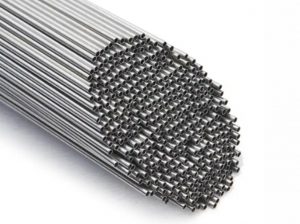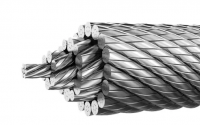The Importance of Molybdenum in Stainless Steel
Molybdenum is a transition metal element and is an essential trace element for the human body, animals, and plants. Molybdenum is a silver-white metal, hard and tough. A major application of molybdenum has to mention its importance in stainless steel.
The common name stainless steel refers to a large class of iron-based alloys that contain chromium, the presence of which promotes the formation of a thin, chromium-rich surface oxide on the steel surface that protects it from corrosion. Stainless steel contains at least 10.5% chromium. If it is lower than this standard, stainless steel will easily corrode in humid air and form red rust. In other words, the amount of chromium determines whether a steel is stainless or not.

Molybdenum also plays an important role in stainless steel – increasing its corrosion resistance. Molybdenum especially improves the resistance of the material to pitting and crevice corrosion in chloride media, as can be seen from the formula for the Pitting Resistance Equivalent Number (PREN). PREN is a value used to measure the relative strength of stainless steel’s pitting corrosion resistance in a chloride ion environment. The higher the value, the stronger the corrosion resistance. The formula for calculating the PREN value is as follows:
PREN = %Cr + 3.3*%Mo + 16*%N
The formula shows that PREN is influenced by Cr, Mo, and N. And under certain conditions, the effectiveness of molybdenum in improving pitting resistance is 3.3 times that of chromium.
Stainless steel is divided into several different types according to its metallographic structure. Different grades have different corrosion resistance, phase balance of metallographic structure, mechanical properties and physical properties. Austenitic stainless steel accounts for about 75% of all stainless steel consumption, ferritic stainless steel accounts for about 25%, duplex stainless steel (mixed structure of austenite and ferrite) accounts for about 1%, and martensitic stainless steel accounts for about 1%. These three grades correspond to different chemical compositions, mainly the difference between Cr, Mo, Ni, and N. The table below lists the most important stainless steel grades and the most important molybdenum-containing stainless steel grades for your reference [1].
| Common ferritic, austenitic, and duplex stainless steel | |||||||
| EN | AISI | UNS | Cr | Mo | Ni | N | PREN |
| Ferritic grades | |||||||
| 1.4512 | 409 | S40900 | 11.5 | 11.5 | |||
| 1.4016 | 430 | S43000 | 16.5 | 16.5 | |||
| 1.4113 | 434 | S43400 | 16.5 | 1 | 19.8 | ||
| 1.4526 | 436 | S43600 | 17.5 | 1.25 | 21.6 | ||
| 1.4521 | 444 | S44400 | 17.7 | 2.1 | 24.6 | ||
| S44600 | 27 | 3.7 | 2 | 39.2 | |||
| Austenitic grades | |||||||
| 1.4301 | 304 | S30400 | 18.1 | 8.3 | 18.1 | ||
| 1.4401 | 316 | S31600 | 17.2 | 2.1 | 10.2 | 24.1 | |
| 1.4438 | 317L | S31703 | 18.2 | 3.1 | 13.7 | 28.4 | |
| 1.4439 | 317LMN | S31726 | 17.8 | 4.1 | 12.7 | 0.14 | 33.6 |
| 1.4539 | 904L | N08904 | 20 | 4.3 | 25 | 34.2 | |
| (6%Mo) | 20 | 6.1 | 18-24 | 0.2 | 43.3 | ||
| Duplex grades | |||||||
| 1.4362 | 2304 | S32304 | 23 | 0.3 | 4.8 | 0.1 | 25.6 |
| 1.4462 | 2205 | S32205 | 22 | 3.1 | 5.7 | 0.17 | 35.0 |
| 1.4410 | 2507 | S32750 | 25 | 4 | 7 | 0.27 | 42.5 |
If you are in need of high-quality molybdenum raw materials to be added to stainless steel to improve corrosion resistance, please visit our website for more information.
Reference:
[1] International Molybdenum Association (n.d.). Stainless grades and properties. https://www.imoa.info/molybdenum-uses/molybdenum-grade-stainless-steels/steel-grades.php
Related Posts

Tungsten Wire Rope for Diverse Applications

Hafnium Carbonitride: An Ideal Material for Extreme Environments

